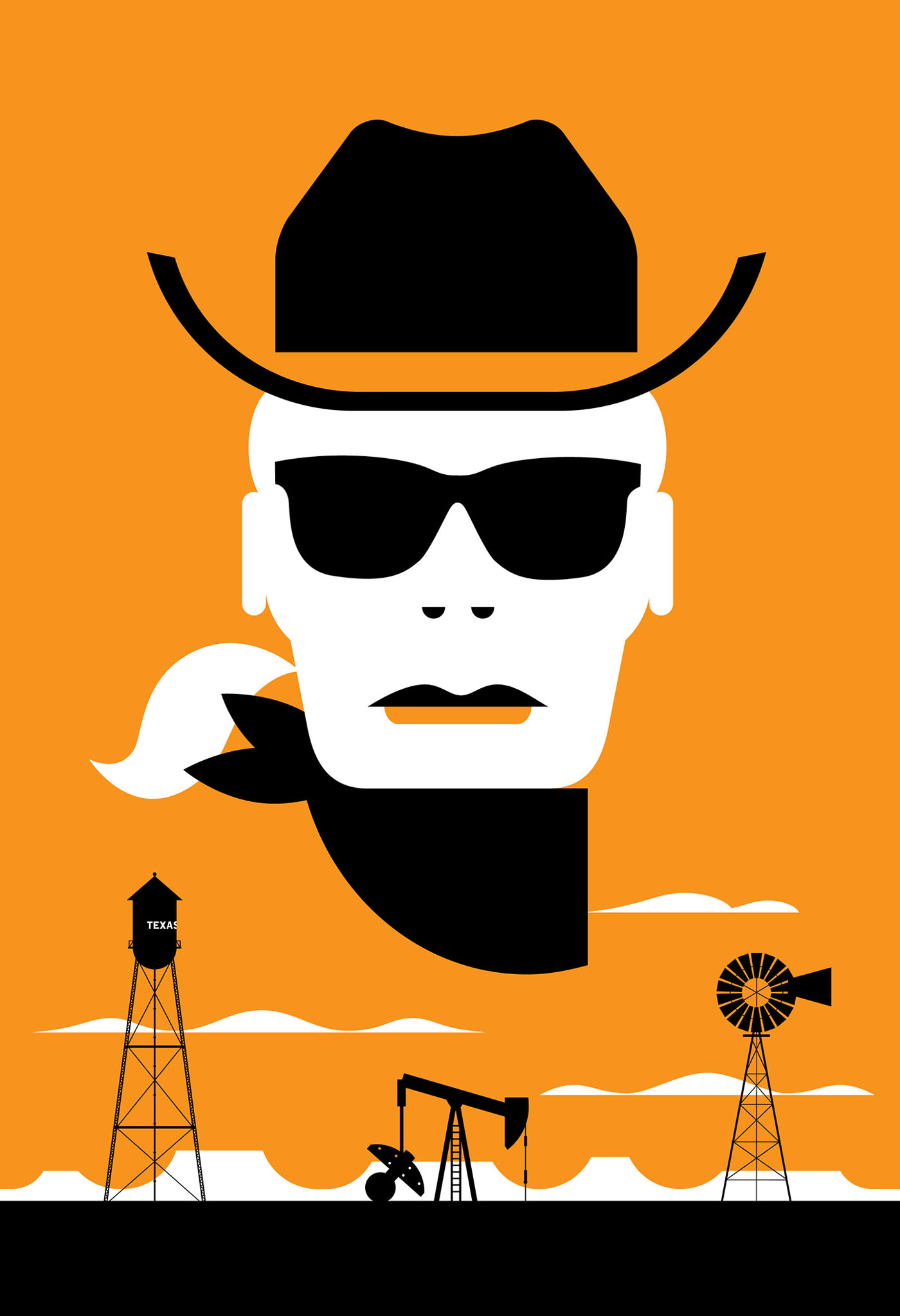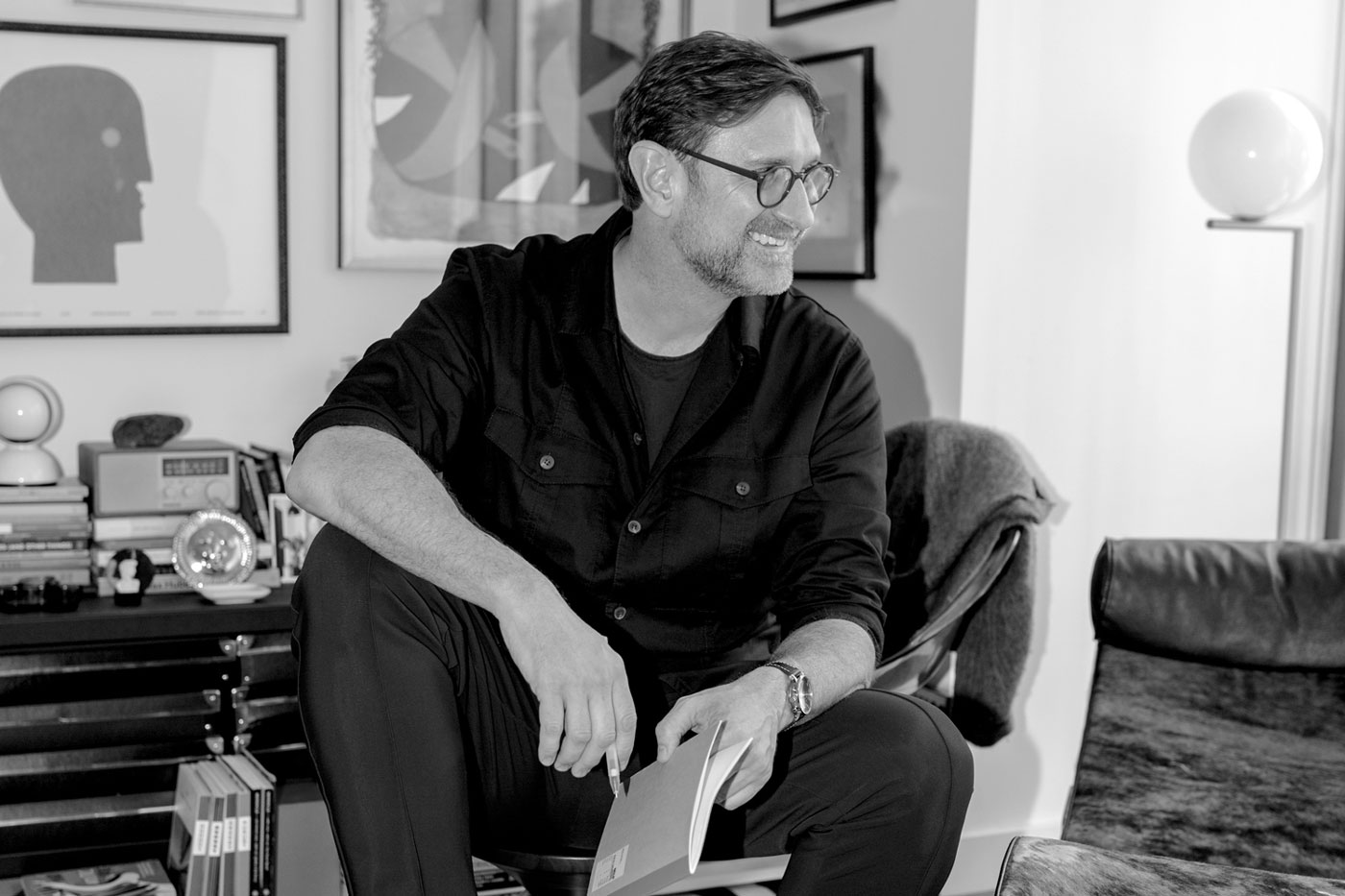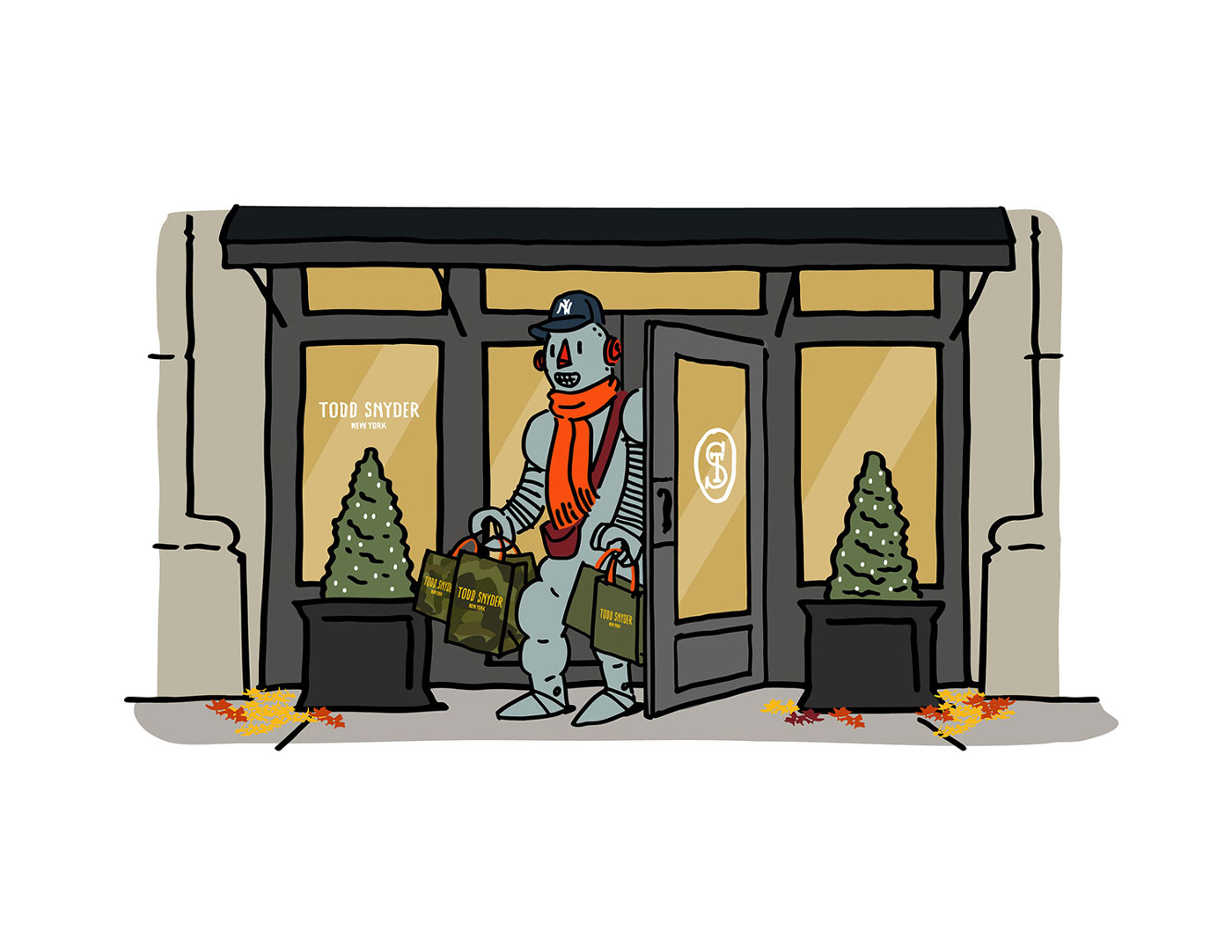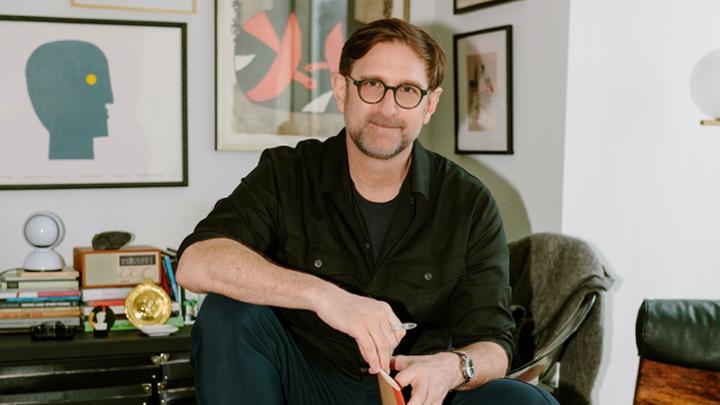Texas Tech alumnus Rob Wilson has made the journey from Ralls to New York City, enjoying immense success as an illustrator every step of the way.
For as long as he can remember, Rob Wilson has been drawn toward drawing. And it is through this boundless talent he has literally made an indelible mark in the creative world.
From a graduating class of 37 in the tiny community of Ralls, Texas, to a bustling campus populated by thousands of Texas Tech University students, then to a design firm in Dallas and on to a thriving professional career now anchored in New York City, Wilson has followed his passion for drawing.
As a result, his multidecade arc of accomplishment has been nothing short of remarkable with work done for a portfolio of clients comprising some of the most familiar brands in the world.
“Starting out, I don’t think I fully understood what a career in art could be,” Wilson said. “But the instructors at Texas Tech were able to help me see all kinds of possible opportunities. It was not just the design teachers, but the fine art instructors too. That spark was extremely important to me and always has been in my career. I credit Texas Tech for making that happen.”


Wilson’s career trajectory has not gone unnoticed by those who saw the depths of his talent, even as a Texas Tech student.
“Within the School of Art program, students majoring in communication design would be required to enroll and pass some studio foundation classes,” recalled former longtime Texas Tech faculty member and successful Lubbock artist Tina Fuentes. “During the time that Rob was at Texas Tech, I was teaching design and drawing classes. His pieces really intrigued me because they had such a sensitivity to them. He seemed to have a natural way in which he balanced the elements within his compositions.”
Wilson is a 1990 summa cum laude graduate with a degree in design communication when it was housed within the College of Arts & Sciences. The program is now part of the School of Art in the J.T. & Margaret Talkington College of Visual & Performing Arts.
“I grew up in Ralls, which is 30 miles east of Lubbock,” Wilson said. “My family has lived there for several generations, and my mother is a Texas Tech grad. I got involved with the art department at Texas Tech when I was a junior in high school after attending a summer program at the Texas Tech Center in Junction, Texas.”
It was there Wilson met Terry Morrow, a former longtime instructor in the school of art with the initial connection made possible through Wilson’s art teacher, Rozanne Bishop, in Ralls.
“My art teacher introduced me to Texas Tech that way, and with her encouragement, I got to know the people there,” he said. “Then, when I started applying to colleges, I realized Texas Tech was where I wanted to go. They had a great art department, and I had already met some of their dynamic faculty.”

Wilson began his academic career by taking the basic art curriculum, including drawing and design classes, which helped clarify his professional aspirations. At one point, he even drew a comprehensive illustration of the Texas Tech campus as a fundraising poster for the College of Arts & Sciences. He decided to major in design communication with a minor in illustration. As he completed his undergraduate work, his focus remained on design.
“I have always loved to draw since my earliest days growing up around my grandparents’ farm near Ralls,” he said. “I liked to draw a lot more than I did driving a tractor, and fortunately, I had parents and family who supported my interests.”
Likewise, Texas Tech was also instrumental in his artistic formation.
“I could see he had that ability to think beyond ABC,” said Fuentes, who retired in 2019 after 33 years at Texas Tech. “He would listen to instructions and then reinterpret them and augment them while staying within the objectives he had to achieve. He not only accomplished those objectives but expanded on them.”
There also was something of a precedent in place as far as gifted graphic designers with ties to Wilson’s hometown.
“There are two well-known designers originally from Ralls,” he said. “Jack Summerford and Bob Dennard are two people I always heard of growing up. I knew both created incredible work in Dallas, and that there was a future in what I was doing. So, I took art lessons and had a lot of very kind, very generous people who helped me realize there could be a career in art.”
Not just any career, either. Over the past 30 or so years, Wilson has built a reputation as one of the best illustrators in the country with his work appearing in numerous places and being sought after by a variety of high-profile clients. His work has been honored by Communication Arts, AIGA, Type Director’s Club and Graphis. He is a member of the Society of Illustrators, and in 2018, was nominated for the Cooper Hewitt National Design Award.

“So many things make Rob a great illustrator,” said Dirk Fowler, associate professor of graphic design in Texas Tech’s School of Art who has long been familiar with Wilson’s work. “I would say his strongest skill is concept. He just thinks differently, and he is extremely versatile.
“He works in many different styles and mediums – from vector art to simple black and white ink cartoons to cut paper and cardboard sculpture. His work is smart, to the point and often times hilarious, but always without unnecessary decoration.”
Wilson’s own nascent creative vision began to gain force, depth and scope under the tutelage of the faculty at Texas Tech. As a result, he was ready for a new chapter, so he took a job with a nationally recognized design firm in Dallas.
“I think my dad’s understanding of an art career was drawing caricatures at the fair,” Wilson said, looking into the rear-view mirror of his life. “He was very creative himself, but he wasn’t sure where my drawing abilities would take me professionally.
“I loved watching animated films, reading and making things. But I hadn’t been around anyone personally who had had a truly creative career. Fortunately, I found supportive people around me who looked at my work – drawings of windmills, jackrabbits and cartoon characters – and saw there could be a path for me.”
Wilson accepted a job with SullivanPerkins in Dallas, where he worked for 22 years, rose through the ranks and eventually became a creative director.
“That is where I received my formal design experience,” he said. “The firm was known for its smart graphic design and branding, and we won many awards for our work. But about 12 years ago I decided I wanted to try some new things, so I pivoted a bit to focus more on illustration.”
Three developments occurred as a result. First, Wilson started his own company, Silas Tom, named in honor of his grandfather. He created a collection of greeting cards and began taking on more editorial illustration work. Then he began spending more time in New York City, the epicenter of the world into which he was immersed. Eventually, he moved there.

“It allowed me to devote myself to illustration,” he said. “Over the course of those 12 years, I had traveled back and forth to New York, spending a lot of time here, and I realized this was where I wanted to be. I had the opportunity to move here five years ago, and at that point, many of my clients were also here.”
For some time, Wilson had experienced the creative vibe of New York tugging at him.
“I loved it here, and I had a lot of friends and connections here,” he said. “It is the center of the universe for design in the U.S., if not the world. New York City is known as a hub for many influential, engaging creatives, and being near that world is important to me.”
That said, Wilson is the first to acknowledge it’s a long way from Ralls to the Big Apple, no matter how professionally accomplished one might be.
“The population of Ralls is a couple of thousand people,” he said. “There are that many in this building where I’m now sitting. When I first came to New York City, it was a bit intimidating, but I realized I had discovered a very accommodating professional environment. That was thrilling, and I was happy to be a part of a community of creative people doing all kinds of interesting things.”
Through the years his clients have included Dell, Design Within Reach, Neiman Marcus, AT&T, HarperCollins, Valentino, The Washington Post Magazine and The Wall Street Journal. The secret to success has been an approach that starts with collaboration and moves to time alone with pen and paper. Conceptual illustration takes time and thought.
“I start by listening to what the client needs and what I can do to help creatively support the project,” he said. “I take in all that information and then figure out what I can bring to it. That usually takes me sitting at my desk or in a coffee shop or walking around the neighborhood. I took long walks with my dog, which helped me focus, too.”
Fowler said Wilson’s attention to detail comes through in every project he takes on.
“His work is extremely intelligent, but approachable and appeals to almost everyone,” he said. “He is also very aware of current events as well as the social and political climate. He seems to adapt to changing times and technologies and finds clients that fit his style perfectly.”


Wilson has reached a point in his career where clients and projects now find him, thanks to his extensive and prolific track record of success. Among his most recent projects is illustrating the book “Unseen Jungle: The Microbes that Secretly Control Our World,” by Eleanor Spicer Rice. The project began during the COVID-19 pandemic.
“I am fortunate to have worked on it the past couple of years,” he said. “The book has a sly tone the author felt my illustrations would complement. I had never worked on a children’s book before.”
Wilson wasn’t sure about taking on the project, but then he met with Rice in 2020, and the deal was practically done.
“I talked with Eleanor, and her enthusiasm and excitement convinced me to work on the project with her,” he said. “She had written several previous books, and this one was about microbes and how they affect the world, so it related to what was happening with the pandemic.”
Wilson was especially active on social media during the pandemic, sharing drawings on his Instagram account and making his mark in another way.
“Rob really hit a high point for me during the earliest days of the pandemic,” Fowler recalled. “Those who followed him on Instagram during that time got to see something really special. I think he probably just stayed in his apartment and drew all day, but he gave us all an interesting, sometimes sad, sometimes very funny, inside view of the COVID-19 lockdown and life in New York City – simple, hard-hitting visual commentary.”
“Unseen Jungle,” from Candlewick Publishing and MIT Press, is projected to be the first in a series of three books. Wilson said he loved the humorous tone and the way Rice delivered information.
“It is a science book I would have loved to read if I’d come across it as a kid in the Ralls library,” he said. “It’s funny and clever. Eleanor wanted something that would be engaging and entertaining for kids, and that’s what this is.”


For Wilson, all the professional doors that have opened and all the marvelous projects he’s been a part of are the direct result of his four years at Texas Tech. His education provided the springboard to making his dreams come true.
“I was the nerd who loved school and going to class,” he joked. “Being a student in the Texas Tech art program really gave me the confidence to go and find my place in the creative world.”
Through the years, Wilson has done a few Zoom lectures for Texas Tech art classes, and he occasionally returns to West Texas, blown away, not by the wind, but by the way the campus and its accompanying profile have grown.
“I’ve driven around it a few times,” he said, “and it is shocking. I can’t believe how much it has changed. It is so impressive. Going from Ralls to Texas Tech was a big jump as far as being around so many creative students and figuring out where your place is going to be, but it is the instructors I remember. They helped me figure it out.”

